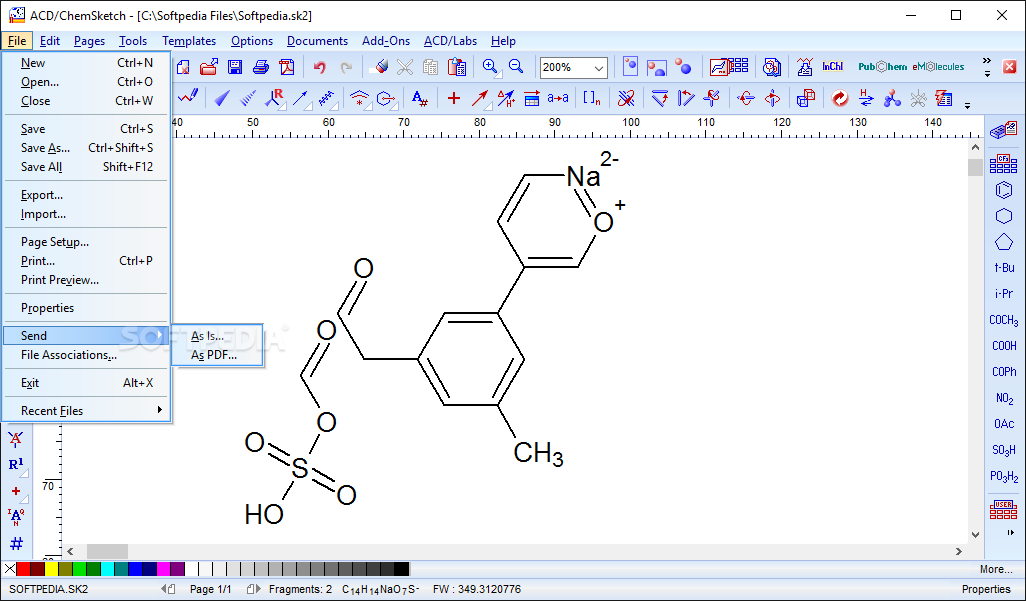

- #INSERT DRAWING FROM CHEMDRAW INTO MESTRENOVA VERIFICATION#
- #INSERT DRAWING FROM CHEMDRAW INTO MESTRENOVA SOFTWARE#
Biomimetic total synthesis of (±)-homodimericin A. Residual dipolar couplings as a powerful tool for constitutional analysis: the unexpected formation of tricyclic compounds. Kummerlöwe, G., Crone, B., Kretschmer, M., Kirsch, S. Using 1,1- and 1,n-ADEQUATE 2D NMR data in structure elucidation protocols in Annual Reports on NMR Spectroscopy Vol. ADEQUATE, a new set of experiments to determine the constitution of small molecules at natural abundance. Improved 1,1- and 1,n-ADEQUATE: pivotal experiments for the structure revision of cryptospirolepine. Computer-Based Structure Elucidation from Spectra Data. Contemporary Computer Assisted Approaches to Molecular Structure Characterization (RSC Publishing, London, 2012).Įlyashberg, M.
#INSERT DRAWING FROM CHEMDRAW INTO MESTRENOVA VERIFICATION#
Computer-assisted structure verification and elucidation tools in NMR-based structure elucidation. Homodimericin A: a complex hexacyclic fungal metabolite. High-throughput in silico structure validation and revision of halogenated natural products is enabled by parametric corrections to DFT-computed 13C chemical shifts and spin-spin coupling constants. Walking in the woods with quantum chemistry-applications of quantum chemical calculations in natural product research. Survey of marine natural product structure revisions: a synergy of spectroscopy and chemical synthesis. Chasing molecules that were never there: misassigned natural products and the role of chemical synthesis in modern structure elucidation.

We use three example compounds, namely cryptospirolepine (505 Da), retrorsine (351 Da), and estrone (270 Da), to demonstrate some important aspects of the workflow, such as input data preparation, handling of structural flexibility, and RCSA data correction when necessary.
#INSERT DRAWING FROM CHEMDRAW INTO MESTRENOVA SOFTWARE#
We also provide step-by-step procedures for the density functional theory (DFT) calculations involved and data analysis using the commercial software MSpin. NMR data acquisition and important considerations are described in detail. The bond-specific RDC data and the atom-specific RCSA data are extracted as changes in 1H– 13C couplings and 13C chemical shifts, respectively, between two measurements under different alignment conditions, with a total experimental time of 0.5–4 d. Protocols are provided for the synthesis of the chloroform-compatible poly(methyl methacrylate) and dimethyl sulfoxide (DMSO)-compatible poly(2-hydroxyethyl methacrylate) gels and sample setup with a preparation time of 2–3 d. Here, we focus on the use of compressed or stretched polymeric gels as two different but fundamentally equivalent methods for introducing sample anisotropy. Obtaining anisotropic NMR data requires the creation of an anisotropic sample environment through an alignment medium. This information is complementary to that obtained from conventional NMR data such as J couplings, isotropic chemical shifts, and nuclear Overhauser effects (NOEs)/rotational frame nuclear Overhauser effects (ROEs). RDCs typically report the relative orientations of different 1H– 13C bonds RCSAs report the relative orientations of different carbon chemical shielding tensors and hence are more useful for proton-deficient molecules. The use of anisotropic NMR data, such as residual dipolar couplings (RDCs) and residual chemical shift anisotropies (RCSAs), has emerged as a powerful technique for structural characterization of organic small molecules.


 0 kommentar(er)
0 kommentar(er)
